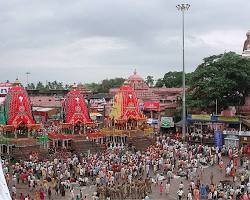SURYA YATRA
All the seasons that nature has given to India are such a unique rainbow of seasons of all the countries of the world, that every Indian remains happy.
Just as the Sahara desert is famous for its heat, similarly a large part of Rajasthan and Gujarat in India is desert, whose heat is enough to compete with the heat of any country.
SUMMER SOLSTICE
In Marwar, where lifestyle danced to the rhythm of the seasons, the summer solstice had a unique significance. Which transformed into the day of Surya Yatra, a colorful pilgrimage dedicated to the Sun God, Surya? In Hindu mythology, Surya is the god who is considered the source of life and energy. He is usually depicted riding a chariot drawn by seven horses, symbolizing the seven colors of the rainbow.
The villagers had been preparing for this annual birthday party for several weeks. Women twirling colorful ghagras took many hours grinding spices and kneading dough for the grand feast. Spent days. People had repaired the chariot in which the idol of Surya was placed, its brass surface catching the shine of the sun. Anticipation echoed in the air due to the desert heat
As the day progressed, the usually quiet village began to bustle with activity. The children, with their black eyes shining with joy, were chasing each other in the narrow streets. Old people their faces filled with tales of a thousand harsh summers came out of their dusty-brick houses, in their white dhotis, the girls, adorned with their finest earrings, bustling about, their laughter echoing the harsh forest air. There was a soothing tune against it.
As the sun began to set, casting long shadows on the hills, the rectangular part of the village came alive. The bonfire, lit with the help of dry camel thorn trees, is bursting with joy, its flames touching the dark night sky. The rhythmic beat of the drum resonating amidst the silence was drawing the villagers towards the center of the festival. Young girls, with their hands decorated with intricate mehendi designs, were dancing twirling folk dances, their colorful skirts creating a kaleidoscope of movement. The wind "Hail the Sun God!" echoed with joy. (Glory to the Sun God!)
Amidst all this, stood Ashoka, a little boy on the cusp of manhood. But, his eyes were not on the dancers or the flickering fire. It rested on the wonderful chariot, its polished surface reflecting the light of the dancing fire. Ashoka dreamed of becoming a charioteer in the future, a dream he shared with his father Shakti, the previous charioteer. A pang of despair entered his heart, Now it was rapidly replaced by a feeling of dedication. He could honor his father's memory, he vowed to himself.
The festivities continued well into the night. The elders told stories of the Sun God's lightning, his scorching rays sustaining themselves even in the harshest of environments. The children were listening to his words with surprise and attention. Later, a grand feast was organized which was organized in the village.
It was a testament to the resilience of They ate hot dal, flaky rotis smeared with ghee and a sweet mixture of dates and milk – a welcome respite from the constant heat.
Now the first rays of dawn painted the eastern sky a pale orange, so the villagers began the Surya Yatra. There was an idol of Surya on a chariot decorated with lilies and bells. Ashok, whose heart was beating with a mixture of worry and happiness, took his place next to the pro driver, who agreed to advise him. The procession, a colorful tapestry of colors and chants, passed through the sands of the barren land. The villagers, their faces close to the rising sun, prayed for a bountiful harvest and protection from the harsh summer months to come.
This adventure took place in a small temple situated on a lonely hill. as soon as the sun The golden disk of the Sun peeked over the horizon, bathing the land in the glow of its warmth, a collective sigh of reverence rose from the crowd present. The end result, plant life and candy services were located in front of the statue of the Sun. The air resonated with a deep sense of gratitude to the sun's existence-giving lightning, which was in sharp contrast to its unforgiving nature.
By the time the scorching sun rose into the sky, the celebrations began to wane. The villagers, there With new faith in hearts and the warm temperature of a shared birthday party, began the return journey towards Mar war. Ashoka's muscles were pleasantly sore from his role in the chariot procession; he walked with a new sense of reason. The summer solstice, a day that began with the harsh glare of the sun, ended with profound appreciation for its life-sustaining power. It turned into an afternoon that seared itself into the memories of Ashoka. Deeply imprinted on him, an afternoon that transformed a boy from becoming a man, ready to carry on the traditions of his village and honor his father's legacy.
